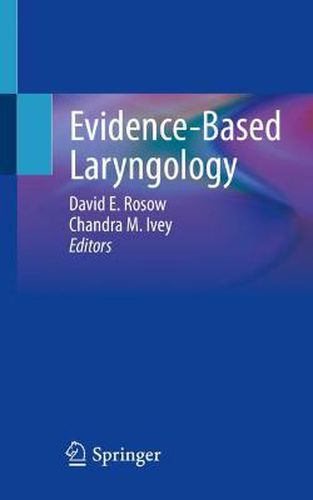Readings Newsletter
Become a Readings Member to make your shopping experience even easier.
Sign in or sign up for free!
You’re not far away from qualifying for FREE standard shipping within Australia
You’ve qualified for FREE standard shipping within Australia
The cart is loading…






This text provides a critical look at the state of the evidence in the most compelling areas of laryngology. Rather than being a comprehensive text covering every single possible area, it focuses on published works in the 9 areas that are of the most interest to laryngologists as well as speech pathologists, general otolaryngologists, and head and neck oncologists managing laryngologic issues. The state of the literature is succinctly summarized and tabulated in each area, allowing the reader to see which areas have high-grade evidence (Levels 1 or 2) to support decision making, and which areas are in need of better quality studies. Each chapter is divided into three main sections: Diagnosis and Pathophysiology, Surgical management, and Non-surgical management. This makes it easier for the reader to browse to the area of interest in each section and to find the evidence basis for a given concept.
Evidence-Based Laryngology will be an invaluable resource to otolaryngologists, residents, speech-language pathologists, and other clinicians who manage laryngological problems and would like to know the evidence basis behind different treatment options.
$9.00 standard shipping within Australia
FREE standard shipping within Australia for orders over $100.00
Express & International shipping calculated at checkout
This text provides a critical look at the state of the evidence in the most compelling areas of laryngology. Rather than being a comprehensive text covering every single possible area, it focuses on published works in the 9 areas that are of the most interest to laryngologists as well as speech pathologists, general otolaryngologists, and head and neck oncologists managing laryngologic issues. The state of the literature is succinctly summarized and tabulated in each area, allowing the reader to see which areas have high-grade evidence (Levels 1 or 2) to support decision making, and which areas are in need of better quality studies. Each chapter is divided into three main sections: Diagnosis and Pathophysiology, Surgical management, and Non-surgical management. This makes it easier for the reader to browse to the area of interest in each section and to find the evidence basis for a given concept.
Evidence-Based Laryngology will be an invaluable resource to otolaryngologists, residents, speech-language pathologists, and other clinicians who manage laryngological problems and would like to know the evidence basis behind different treatment options.